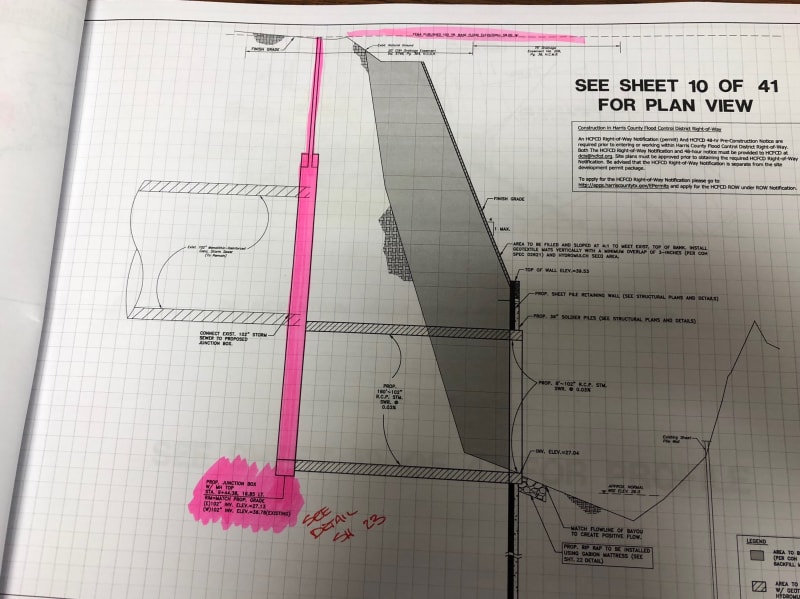DenverStruct
Structural
- Sep 23, 2006
- 39
Me and my colleague had an interesting conversation. We are designing the junction box highlighted in pink. All the way almost on the top of the photo is the FEMA 100 year flood elevation. My question is, how would you design the soil/water lateral force? How do you design the buoyancy (whether or not you need extended base). Where do you put the ground water elevation? I want to see what everyone's thought. The left pipe is existing, ther right pipe is new. The box inside dimension is roughly 8 ft x 12 ft x 21 ft tall.


